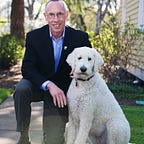The Fed must pay back what it borrows. That may sound crazy, but even the Fed can become overextended, limiting their ability to provide liquidity in the future when the need arises. The Federal Reserve first used Quantitative easing (QE) in 2008 to push mortgage rates down and home prices up when the bond market had failed to accomplish this. Envision the Fed putting its thumb on the scale. The cratering home prices ended ten years ago, December 2011. Unfortunately, the Fed waited too long to start “unwinding” their portfolio of mortgage-backed securities (MBS) and got blindsided by the COVID outbreak. QE was employed again in March 2020 to counter the cash shortages of homes and businesses.
Millions of Americans refinanced their homes to get payment relief and cash to sustain businesses and households. It does provide immediate relief, but it also extends the length of mortgages which ideally should be paid off by the time one retires. Thus, retirements could be postponed or be less comfortable.
Chairman Powell has the opportunity to steer the economy back to normal as former Fed chair Paul Volker did in the 1980s. Chairman Powel is certain to be confirmed by the Senate for another four-year term as Chairman of the Federal Reserve, in which case he will fully own the Fed’s response to COVID. It will take a strong position on his part to resist political pressure and greenwashing so prevalent in America.
